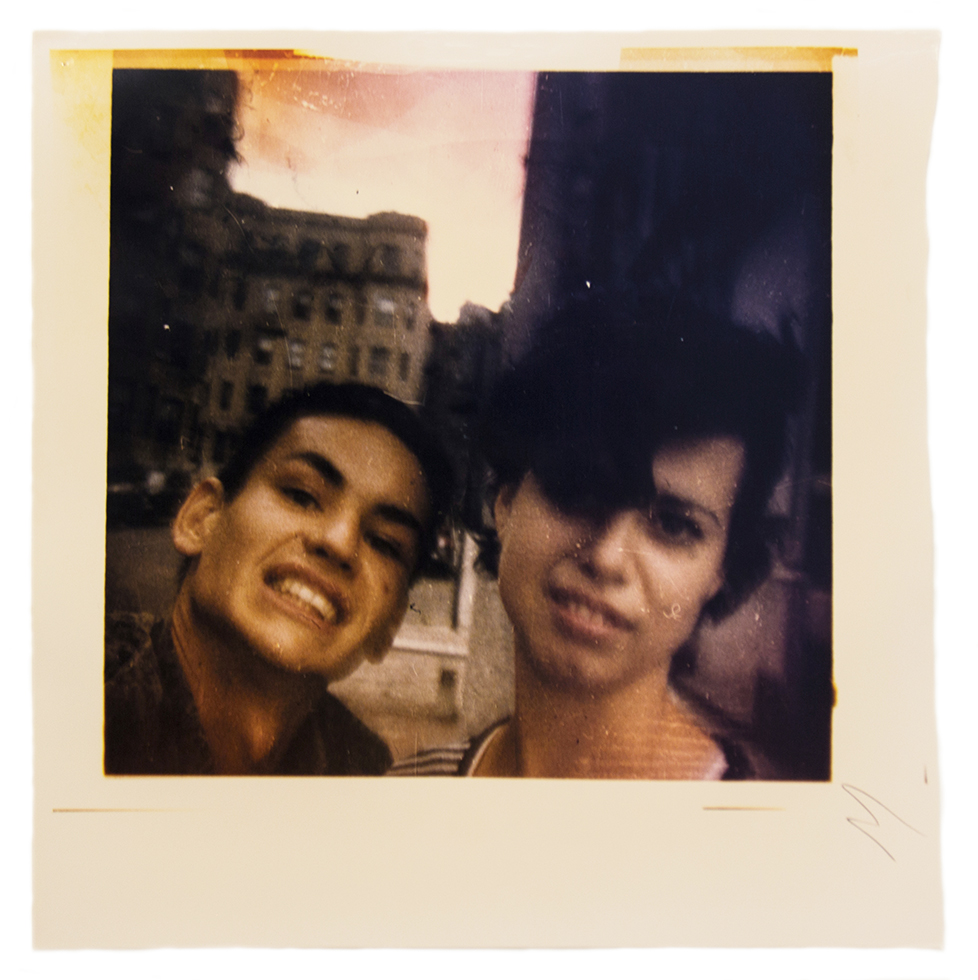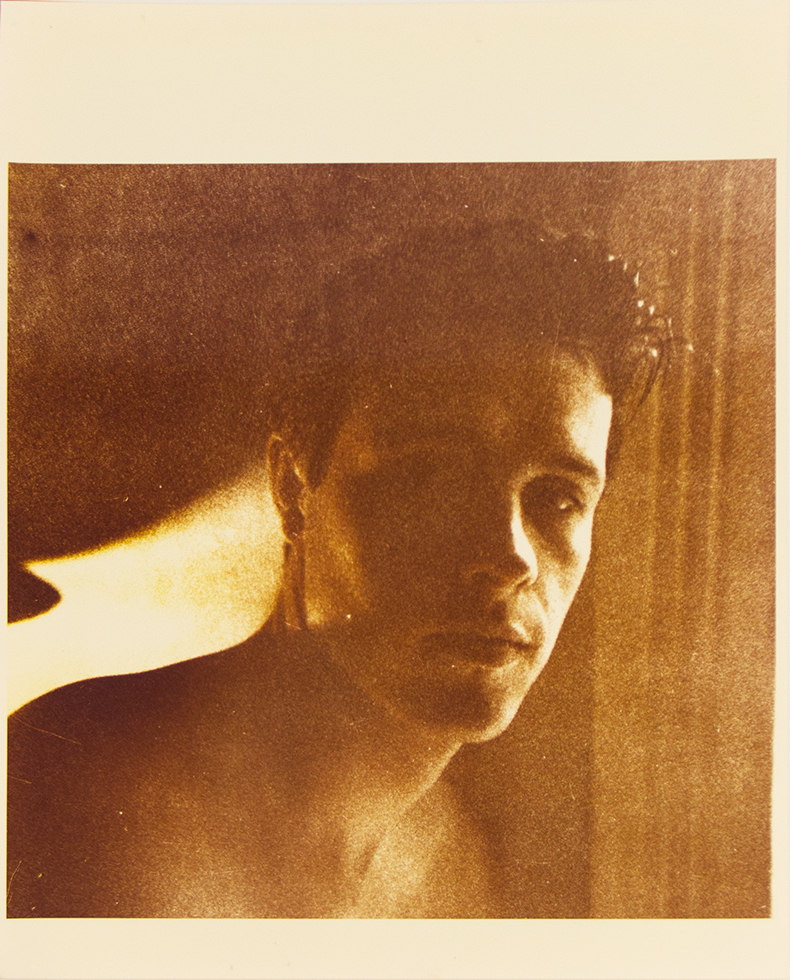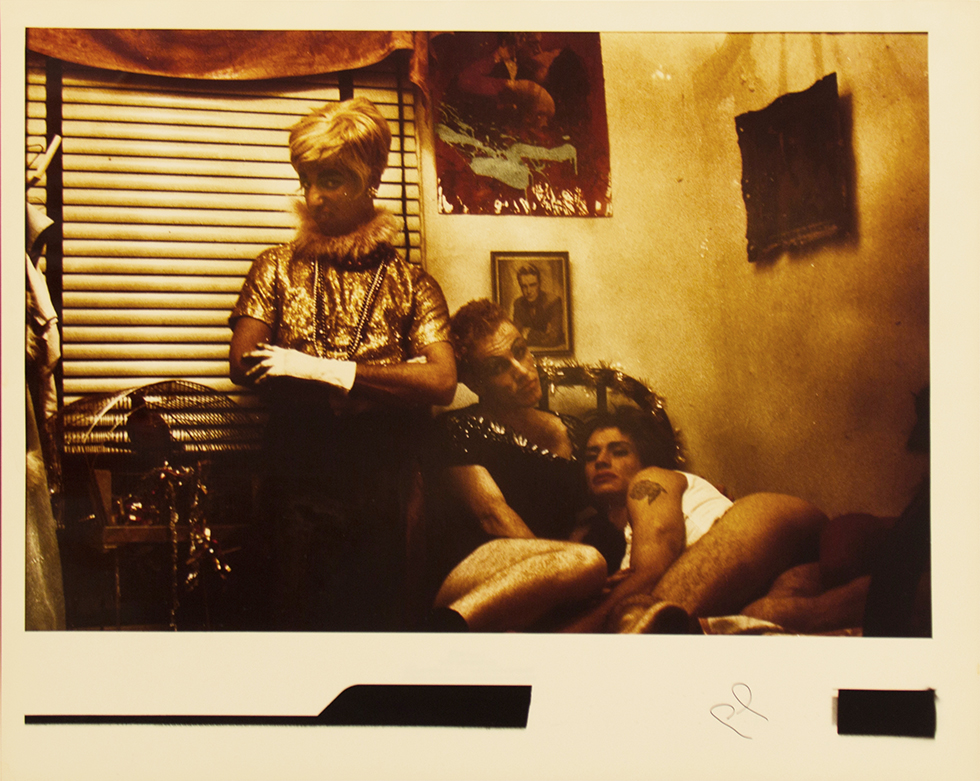On a recent trip to The Strand, I found a copy of There Was a Sense of Family, a collection of interviews with friends of the artist Mark Morrisroe. The book was published in 2013, almost three decades after Morrisroe’s death in 1989 from AIDS-related complications. (He was 30 years old). And yet, the conversations convey such vivid memories. Through his lovers and collaborators, a vibrant portrait of Morrisroe — as an undeniable artist, a complex person, and (in Nan Goldin’s words) “Boston’s first punk” — comes into focus.
One of the book’s contributors is artist Gail Thacker, who met Morrisroe on her first day at Boston’s School of the Museum of Fine Arts. Later that evening, Morrisroe and his high school sidekick Lynelle White stormed into Thacker’s apartment, rooted through all of her notebooks, and pulled her artwork off the wall. “Mark had a weird way about him when it came to making friends,” Thacker told me recently of what turned out to be a display of camaraderie. “He left a shit in Nan’s mailbox.”

A Polaroid of the pair is included in Boy Next Door (Beautiful but Dumb), a new exhibition of Morrisroe’s photographs opening tonight at ClampArt in New York City. Morrisroe made it in the summer of 1978. “Blow Both of Us” it’s titled.
Morrisroe was born in 1959, just five miles north of Boston. His mother was an addict, and he often claimed his absent father was the Boston Strangler. (The famous serial killer was indeed his mother’s landlord). He became a hustler at 15, and spent his earnings on art supplies, ice cream, makeup, and rent for his own apartment. He sustained a serious spinal injury at 16, after being shot by one of his clients. As a result, he developed a limp.
In 1975, Morrisroe and White began publishing a zine called Dirt. A proto-punk fusion of Andy Warhol, John Waters, and The National Enquirer, Dirt was a hand-typed collection of wild, fictional (and hysterical) celebrity exposés. They made black-and-white photocopies, colored in the pages, and dished out Dirt at the city’s underground nightclubs. After Morrisroe graduated from high school, he enrolled at the School of the Museum of Fine Arts.

Blow Both of Us enshrines hallmarks representative of the singular practice Morrisroe would develop over the following decade. The uniquely manipulated Polaroid (of which there are over 800 in his 2,000-photograph oeuvre) bears flecks, specks, distortions, and scribbles. These experimental scars often enliven Morrisroe’s “sandwich prints.” The artist pioneered this photographic process by “reshooting a photograph, producing an intermediate negative, and exposing the photographic paper through the two sandwiched negatives.” Sandwich printing leaves much to change and change, but Morrisroe’s risks resulted in a captivating, gritty dreaminess.
Blow Both of Us features Morrisroe’s most frequent subjects: himself, and a loved one. The artist Jack Pierson (Morrisroe’s boyfriend at the time) appears in many of his most tender photographs. Also on view at ClampArt: Morrisroe’s portraits of fellow drag queens. He performed in Provincetown and at The Pyramid Club with Pierson’s college pal Stephen Tashjian (aka Tabboo!) as drag duo The Clam Twins. In one of Morrisroe’s Super-8 films, the MassArt grads refresh Tennessee Williams with equal doses of camp and punk.

Another critical Boston subject included in the ClampArt show: the late, hugely influential gallerist Pat Hearn. “In terms of location, Ms. Hearn tended to be the first art dealer on the block,” The New York Times said of her eponymous gallery’s East Village and Chelsea incarnations. (John Waters put it better: “She blazed her own trail through the most abandoned neighborhoods in Manhattan and made the weekly art addicts come to her galleries and fight their way through the real addicts who were there first.”).
In 1986, the same year Hearn mounted Morrisroe’s first New York City solo show at her 9th St. space, the artist was diagnosed HIV-positive. Hearn served as the executor of Morrisroe’s estate, and continued to exhibit his work throughout the 90s (she passed away in 2000 at age 45). Boy Next Door (Beautiful but Dumb) is comprised principally of works acquired directly from Hearn. Which makes the show something of a rare opportunity to see Morrisroe’s work in-person.
Following Hearn’s death, the artist’s estate was acquired by Collection Ringier in 2004, and is presently housed at the Fotomuseum Winterthur in Switzerland. The Winterthur mounted a survey in 2010, which was followed by a show at Artists Space in 2011 (the only comprehensive Morrisroe retrospective in the United States). “Because the vast majority of his work is held in Winterthur, only the few scattered pictures he sold or gifted during his lifetime tend to crop up in exhibitions,” explained Aperture’s Matthew Leifheit.

This seems to be changing, though. Several sandwich prints were included in the Whitney’s 2016 portrait survey Human Interest, which was followed by a solo outing at New York City’s Alexander and Bonin. The pictures in that show had never before been exhibited. They belonged to an old neighbor of Morrisroe’s, who bought prints when the young artist needed help making rent.
There’s much about this work to inspire a new generation of daring image-makers. Morrisroe’s experimental processes, aggressive diaristic sensibilities, and radically queer gender play still beg investigation and obsession. “His pictures of his lovers, close friends, and objects of desire, and his touching still-lifes of rooms, dead flowers, and dream images stand as timeless fragments of his life, resonating with sexual longing, loneliness, and loss,” Goldin remarked in 1993. “He put this persona on as if he was rough, hollow. He was not, at all,” said Thacker. “He was a real person, a real artist.”
‘Mark Morrisroe: Boy Next Door (Beautiful but Dumb)’ is on view at ClampArt through March 24, 2018. More information here .
